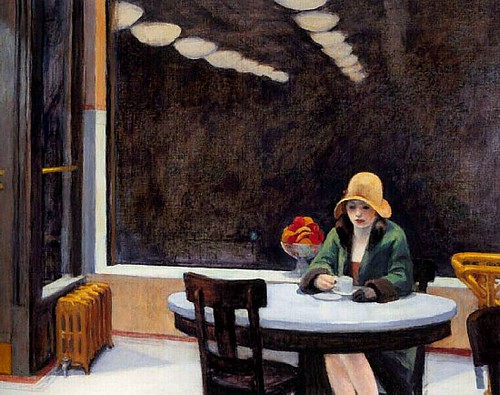Edward Hopper: An appreciation
For readers lucky enough to live in Boston, you had the opportunity to view the Museum of Fine Arts' exhibit of works by Edward Hopper that is about to close. Hopefully, other cities will get something like it soon.
Hopper is an American icon, and his pictures are well-known - in a few cases, like Nighthawks, almost clichés. He's usually classified as a realist, painting at a time when the dominant artistic trends were moving towards abstraction and expressionism. But his paintings, which have few people in them, have a strong abstract flavor to them, being dominated by Hopper's highly individual and instantly recognizable language of shape, light, and color. His human subjects are well-known for their seeming lack of connection with one another, as if each cannot get out of his or her private world of thought. Hopper was also influenced by, and influenced in turn, the language of cinema. The moments captured in his paintings leave a strong impression of being times in the middle - as if something important has already happened and something else is about to happen, but the quiet moment in between is what we see.
One example of Hopper's influence is the way he changed how people look at the ordinary. His mature works painted in the 1920s and 30s on the New England coast were the stimulus for later appreciation of Victorian mansions and lighthouses, for example - now we have all those calendars of rugged New England locales thanks to Hopper. But that's what great artists do: change how we see things.



0 Comments:
Post a Comment
<< Home